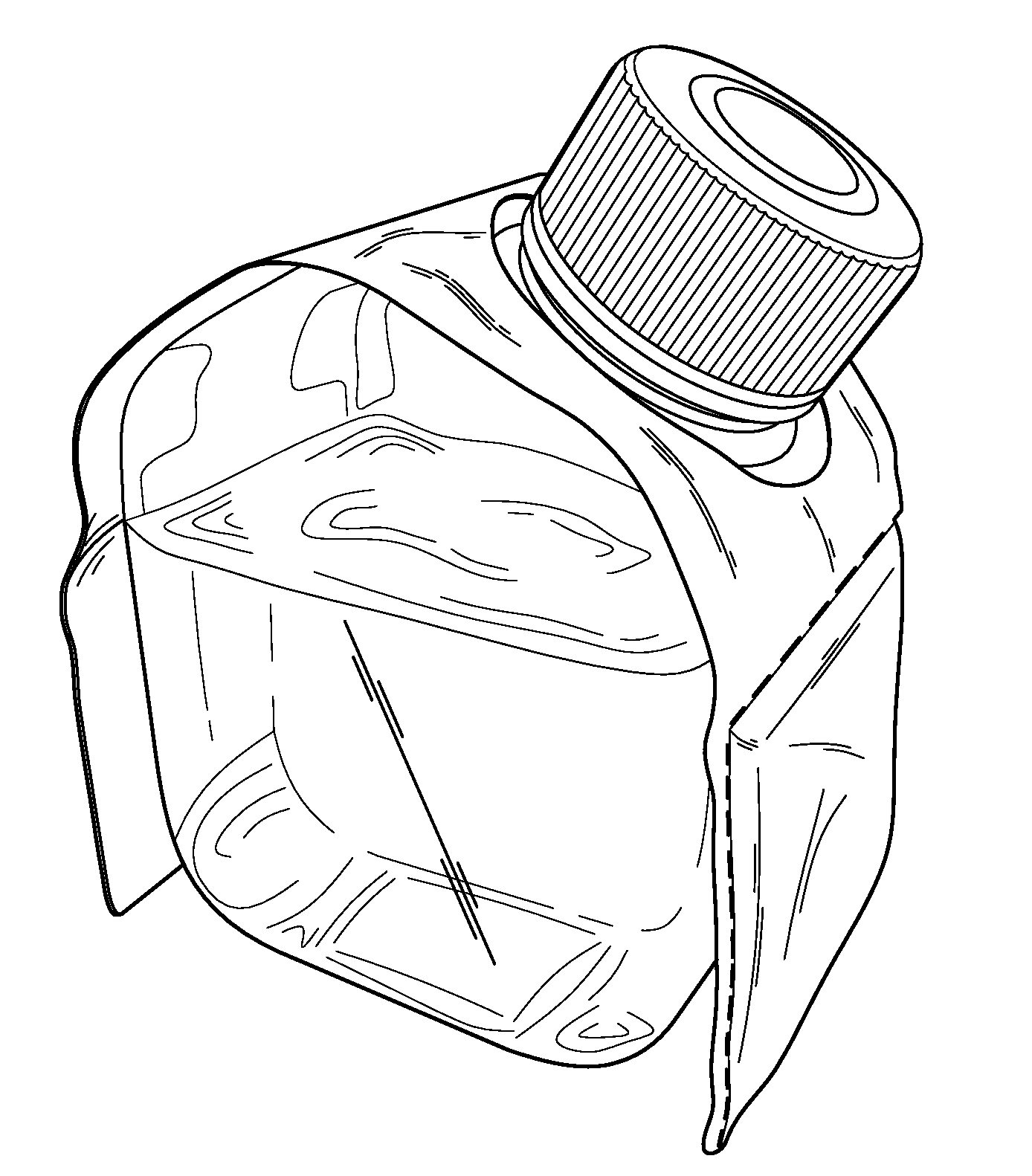Labels, containers, system and method for providing reagents
a technology of reagents and labels, applied in the field of molecular and cellular biology, can solve the problems of manual dexterity required for sterile transfer of materials from reagents or media, difficult and less efficient labels, and inability to provide reagents, so as to prevent additional flow and prevent backflow of liquid
- Summary
- Abstract
- Description
- Claims
- Application Information
AI Technical Summary
Benefits of technology
Problems solved by technology
Method used
Image
Examples
example 1
[0188]An example of a cellular growth media product that is marketed by catalog is Basal Medium Eagle (BME) (1×). The product, BME, which may be available in a 500 ml volume is in the Basal Media type or group of products and that type of product is indicated in this example by a lime green color. Within the basal media family or type are other media products such as BGJb medium, Brinster's BMOC-3 Medium, CMRL Medium, CO2-Independent Medium, Cryopreservation Medium, Dulbecco's Modified Eagle Media (D-MEM), F-10 Nutrient Mixtures, F-12 Nutrient Mixtures, Glasgow Minimum Essential Media, Grace's Insect Cell Culture Media, Improved MEM Zn++ Option (Richter's Modification), IPL-41 Insect Media, Iscove's Modified Dulbecco's Media, Leibovitz's L-15 Media, McCoy's 5A Media (modified), MCDB 131 Medium, Media 199, Medium NCTC-109, Minimum Essential Media (MEM), Modified Eagle Medium (MEM), Opti-MEM® I Reduced Serum Media, RPMI Media 1640, Schneider's Drosophila Medium, Waymouth's MB 752 / 1 Me...
example 2
[0191]In certain embodiments, various media subfamilies such as Dulbecco's Modified Eagle Medium DMEM may be identified by a separate color such as blue. In this case, various formulations and volumes of DMEM would be associated with individual numbers. For example, Dulbecco's Modified Eagle Medium (DMEM) (low glucose) (500 mL) may be packaged in a bottle with a prominent blue color region on the label, a matching prominent blue color region on the cover, a prominent product identifier of 120 in blue on the label, and a prominent product identifier of 120 in blue on the cover. Thus blue represents the color coded identifier for DMEM and 120 is the product identifier that can be used to refer to the specific medium in the DMEM class, here 500 mL bottles of low glucose DMEM. Again, the label may contain additional information but need not necessarily have such information.
example 3
[0192]An example of a product and package embodiment of the disclosure may be better understood by referring to FIGS. 8, 9&10. The following example is a microbiological liquid product packaged in an ergonomic container that has color coded labels and covers to identify the specific product. This system increases user efficiency and decreases the likelihood of contamination and spillage. In doing so, the system also decreases operating costs and the time required for the completion of research projects.
[0193]The bottle or container of this example is shown in front view in FIG. 8. The bottle has a rectangular footprint for efficient storage in rows in a refrigerator, on a shelf, or in a shipping container. The bottle also provides an angled top to provide angled access to the opening and also to provide an angled surface toward the rear for easily readable labeling. The features of the bottle include a cover 302 designed for easy one handed opening by including a ridge 304 for easy ...
PUM
 Login to View More
Login to View More Abstract
Description
Claims
Application Information
 Login to View More
Login to View More - R&D
- Intellectual Property
- Life Sciences
- Materials
- Tech Scout
- Unparalleled Data Quality
- Higher Quality Content
- 60% Fewer Hallucinations
Browse by: Latest US Patents, China's latest patents, Technical Efficacy Thesaurus, Application Domain, Technology Topic, Popular Technical Reports.
© 2025 PatSnap. All rights reserved.Legal|Privacy policy|Modern Slavery Act Transparency Statement|Sitemap|About US| Contact US: help@patsnap.com



